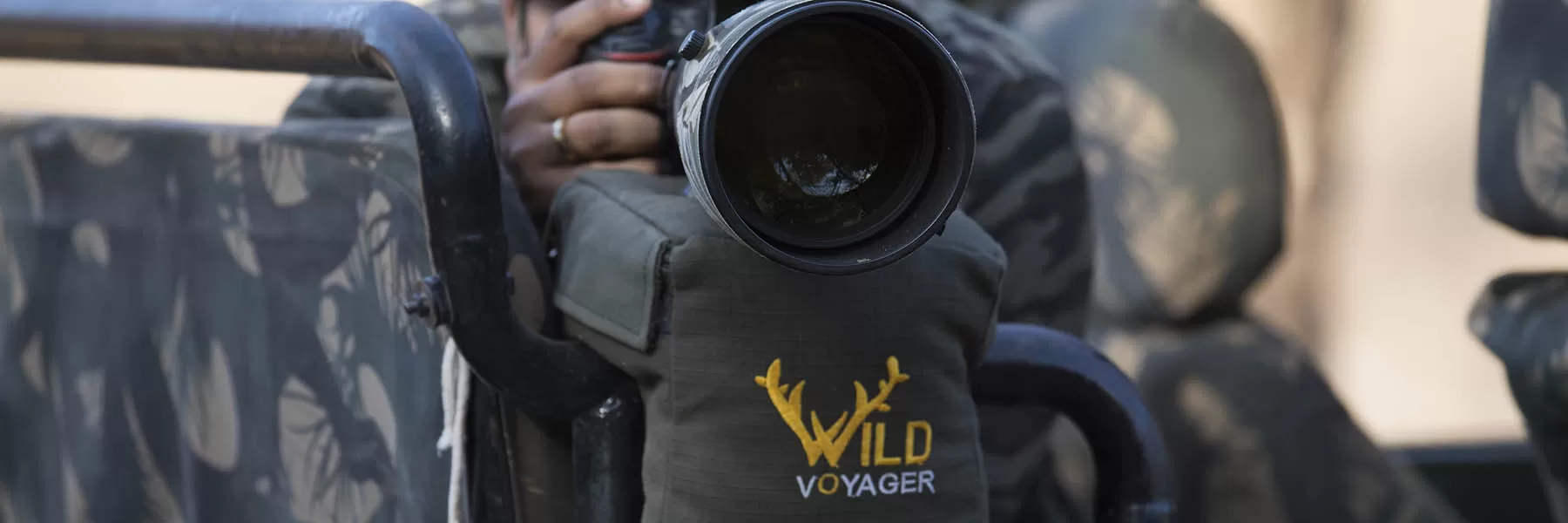One of the most common questions people ask me about photography is about my gear. I started with a modest point and shoot digital camera back in 2006, when I used to shoot almost anything under the Sun. Then I slowly took interest towards nature and wildlife and got my first DSLR, a Nikon D5000 in 2009. As it is said composition and visualisation makes or breaks an image, but gear is important too. Particularly when I started selling prints, stocks and used my images for marketing collaterals then the images had to meet certain technical standards of sharpness, exposure etc apart from composition elements.Then with times and needs got my gear upgraded. However each person is at a different stage of a learning curve and has different gear needs. What I use may not be relevant to everyone else and vice versa. The purpose of this article is more to illustrate the ‘WHY’ behind my gear selection so that it may help you in YOUR gear selection.
To start with, currently these are the gears I have.
Cameras
Nikon D5 x 2
Lenses
Nikon 14-24 F2.8
Nikon 24-70 F2.8 VR
Nikon 70-200 F2.8 FL
Nikon 300mm F2.8 VRII
Nikon 600mm F4 FL
Nikon 1.4x TCIII
Nikon 50mm 1.4
Tripod
Gitzo 5 Series base
Nest Gimbal Head
Manfrotto Pan Head
Flashes
Nissin External Flash
Drone
DJI Phantom 4 Pro
Which camera I use for what purpose
Nikon D5 is flagship Nikon camera and it is not for nothing. The low light capability, frames per second it can click, the focussing ability are amongst the best in the market, or perhaps the best (I will not get into a Canon vs Nikon flagship comparison). D5 is my go to body for Wildlife action and for use during low light. The D810 is a very different camera and actually a better one for landscape pictures and portraits. For landscapes I used the D810 earlier, but now I use the D5 for everything.
Which lens I use for what purpose
These are broad classifications of the purpose of each lens, however I believe there are no rules as such to shoot certain things from certain things, and I believe in complete experimentation with lenses and perspectives. However to give a structured classification, I need to begin somewhere, so this is the most common classification that is widely accepted and has been followed by me to a great extent.
For landscape pictures
For Widest end I use a 14-24mm Nikkor and for midrange a 24-70 Nikkor. These are the best lenses Nikon makes in this range. At the Widest end of 14mm, there is some distortion but to me it looks natural and good in Wide landscape images. For good landscape images, there are only a handful of lenses which can claim to be the equal of a 14-24 Nikkor. It is my de-facto choice for landscape photography.
While am very happy with the image quality of 24-70mm (it is second to none), but somehow I find the perspective bit too wide for landscape images, though not always. I would see on a landscape photography trip I end up using the 14-24mm lens atleast 70-80% of the time and the 24-70mm lens about 20-30% of the time, but that is not to do with the lens quality or sharpness, it is just to do with the framing.
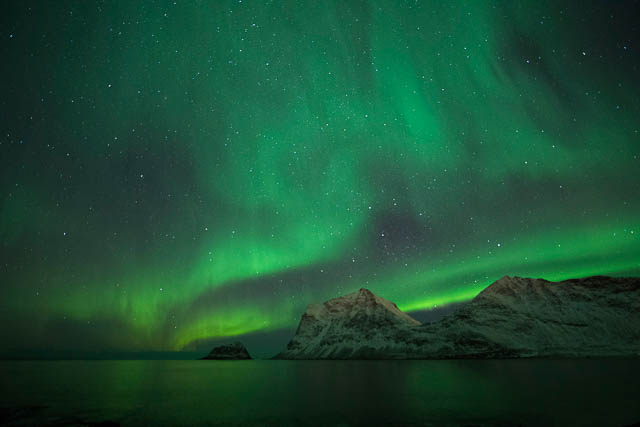
Northern lights with 14-24mm lens in Norway
Portraits, Wildlife Habitats
Though am not much into portraits, but for Wildlife Habitats typically use the 70-200mm lens. It is also a favourite lens of wedding photographers for close portraits. Habitat images such as the below are made with the 70-200 lens. It is is a great lens for shooting wildlife in its habitat, and is as sharp as any other lens in this lens.
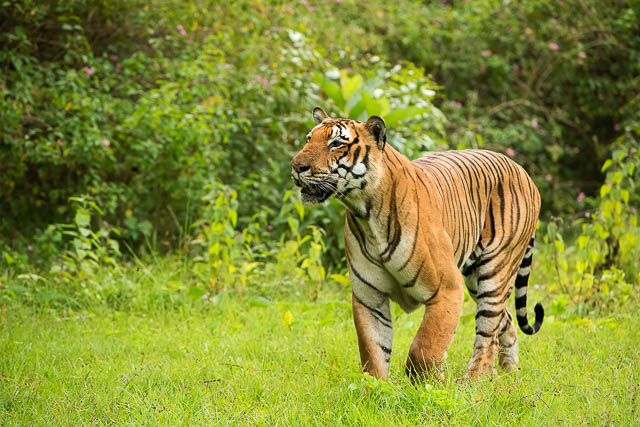
Tiger with a 70-200mm lens in India
Midrange lens for Wildlife
I had a 600 and 70-200 before and was at a crisis in selecting a midrange lens to cover the middle ranges. These ranges are very important in Wildlife Safaris of India and East Africa. Most of the Big Mammal shooting often happens in 200 to 600mm range and it is necessary to have a strong piece of equipment for this range.
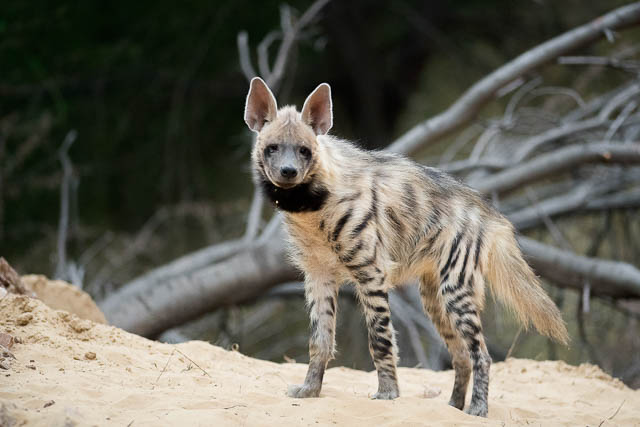
Striped Hyena in India with 300mm lens
I had to choose between Nikon 200-400 F4 and Nikon 300mm F2.8 for this range. The 200-400 offers unmatched flexibility of compositions for it being a zoom and is reasonably fast focussing and quite sharp. However for Wildlife low light shooting ability is one of key criteria for me so I like my lenses to have widest aperture as possible in its range, apart from that the 300 being prime gave unmatched clarity (it is one of Nikon’s sharpest lenses) and super fast focussing. Sacrificing the flexibility of a zoom, these points were deal clinchers for me. Still this range lies somewhere confused for me, between 70-200 and 600, and often due to space constraints I end up using the 600 and 70-200 and skip the 300mm, but that does not take anything away from this gem of a lens.
High Range lens for Wildlife and Birding
Since I am into bird photography also apart from mammals, having a high focal length prime lens is a requisite for me. If I had to choose between a 800mm and 600mm, the later got my vote as its base aperture is F4 allowing me to operate it in tough light conditions. Also am not restricted to 800mm focal length and can use 600mm lens during my Wildlife safaris also comfortably. For small birds I can always use the 1.4xIII TC with very minor loss of sharpness. This is my de-facto lens for wildlife close-ups however these days am more inclined to shoot wildlife in wide angles and in habitat shots.
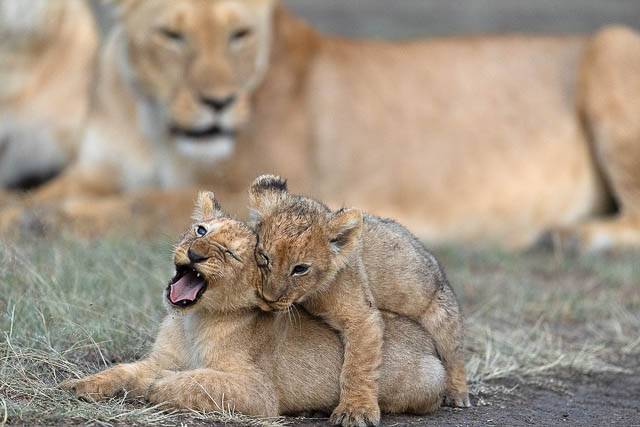
Lions closeup with 600mm lens in Kenya
Exceptions
As I said earlier, there are no rules as to which lens should be used for what purpose. Following are two classic examples.
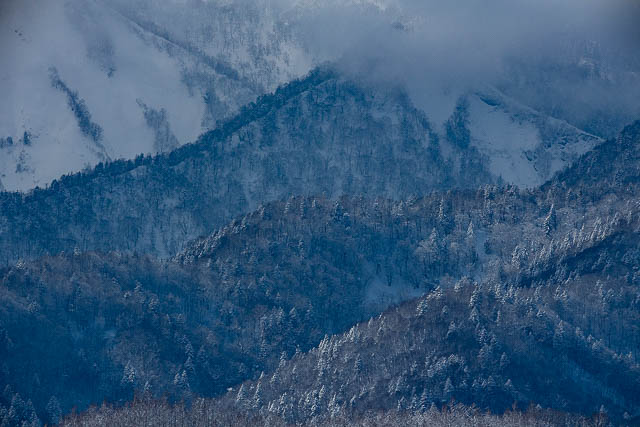
Landscape image shot with 400mm lens in Japan
Here I had used a Nikon 400mm 2.8 lens to shoot a mountain faraway and the textures that formed in that mountain, and this lens captured it beautifully for me. This would not have been possible with a wide angle lens. Nikon 400mm 2.8 lens is considered as a classic wildlife and sports lens but here it is put to good use for landscape photography.
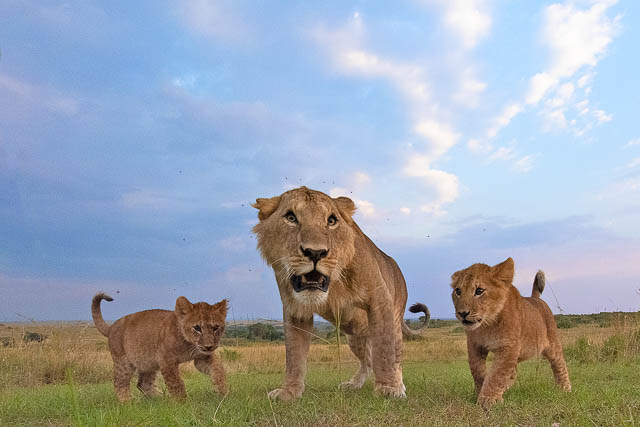
Lions closeup with 14mm lens at 14mm
In wildlife the perspective completely changes when we show them more intimately. Nothing better than a 14-24mm lens to shoot intimate behaviour and activities of a Lion pride. (Do not assume I was holding the camera in Lions mouth and risking my life 🙂 This was shot using a camera buggy which carried the camera and was controlled by a remote)
Other Gears
Flash is hardly used by me, except for occasional night photography. For Wildlife at night I prefer a torch or beamer over flash. The drone is used for aerial videography and some still photography from air. It gives some unique perspectives which are not possible otherwise.
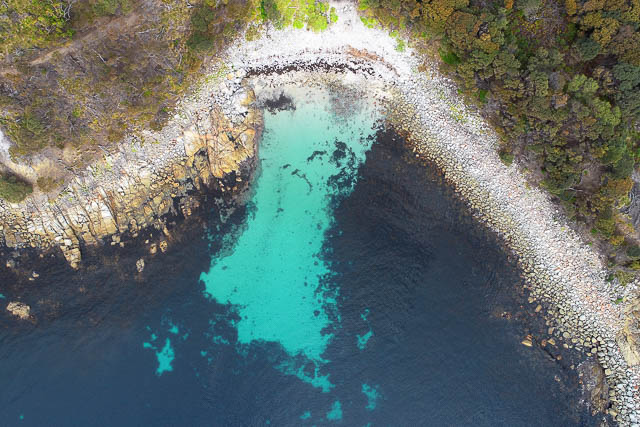
Beach aerial photo with DJI Phantom 4 drone in Tasmania
One of the key advices I give to beginners is not to fall in the gear acquisition syndrome. Gear upgradation is a never ending process. More important is to spend time in the field with your existing gear. Once you have outgrown your existing gear or you start having professional needs, then certainly gear upgrades should happen.
My final thoughts are that these classifications are just meant to initiate you somewhere and gain a broad understanding of the purpose of each lens, however do not take these as writings on a stone and feel free to experiment, break rules and make your own rules. This is a creative art and each person sees the same thing differently, so develop your own distinct way of looking at things and developing your own style with your equipment.
Edit : 15 July 2023
Now I have sold the Nikon 600mm F4, Nikon 300mm F2.8 and one D5 body. Instead, I got Nikon Z9 (my entry to the mirrorless world), and Nikon 400mm 2.8 TC, which has an inbuilt teleconverter, to switch to 560 F4 with just a physical button. That makes it a two-in-one lens, with 400 2.8 on one side and 560 F4 on other side, hence I do not miss my 600mm. On the other side, Z9 is a beast of a machine with unbelievable focusing speed, focus accuracy, and image clarity. It is definitely a two-level step up over the super duper D5. So far so good, am happy with the reduced gear weight and quantities. The Nikon trinity of 14-24, 24-70, and 70-200 still remain and I do not plan to dispose them anytime soon, but possibly may replace those with their Z counterparts in the near future, and migrate completely to a mirrorless system.
On the drone, now I own a DJI Mavic 2 pro instead of the Phantom, and the still image quality is a significant step up for sure, with RAW image ability on a Hasselblad camera.
Disclaimer – These are my personal opinions only and not of Wild Voyager as an organisation. Also this is not to promote any particular camera brand, but since I use Nikon from beginning so all my gears are Nikon. If someone is already invested in a camera family, I always advice them not to switch as both the manufacturers have a very similar product range at all ranges and there is very little to choose from. Even these days Sony and Panasonic are coming up with very interesting gears.


